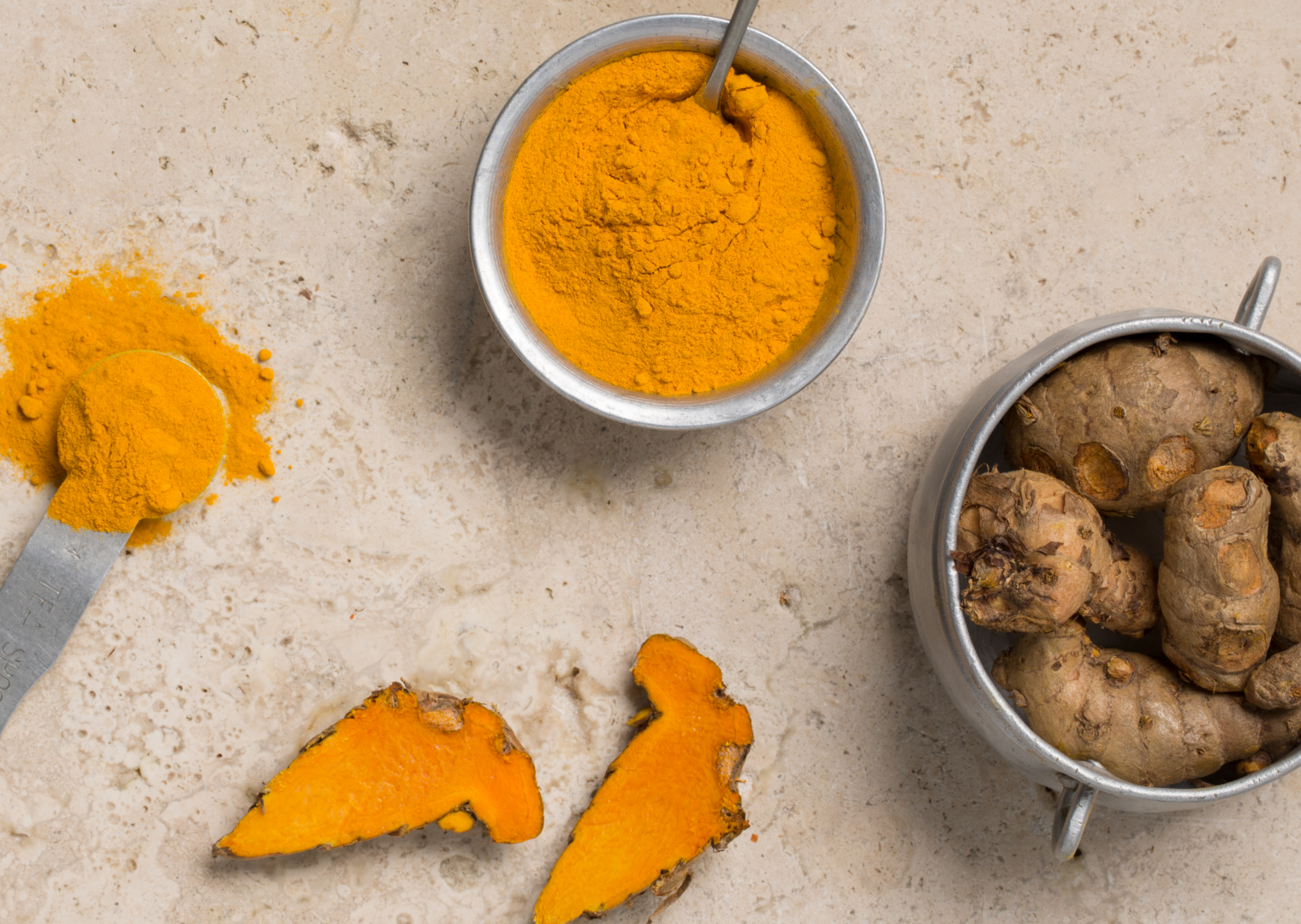Bold in flavour and colour, turmeric is set to be your favourite new addition to the garden.
The first time you set eyes on a turmeric (Curcuma longa) plant, you most likely won’t guess what it’s hiding. Beneath its beautiful pink flowers and vibrant green oblong leaves, lies a rhizome (an underground stem), bursting with health-boosting nutrients. Rich in beta-carotene, copper, phosphorus and magnesium, it’s said to improve blood circulation, help to relieve inflammatory arthritis and ulcers, and treat asthma and eczema. On top of all this, the oil has antiinflammatory properties, and a paste of the spice can be used to treat wounds. t Turmeric is native to South East Asia, where it grows in dense tropical forests under enormous trees that provide partial shade. Mimicking a similar habitat in your garden will do wonders for your plants. If that is not possible, starting your plants indoors and moving them outside when the weather is fine is not a bad idea either. It’s a little tricky to find seeds or seedlings in South Africa, but you can easily grow your own plant from fresh turmeric rhizomes (preferably organic, so check out farmers’ markets). Avoid rhizomes that are mouldy, squishy or shrivelled if you go this route – these will grow but may not be healthy enough to produce a harvest. Alternatively, check livingseeds.co.za for rhizomes or herbgarden.co.za for plants.
Once you have harvested your turmeric, use it to give your skin a natural glow. Crush the roots into a paste. When you’re ready to use it, add a few drops of water, then apply it as a face mask. For a health-boosting drink, mix a teaspoon of turmeric powder in a cup of hot water and sip slowly. If you are feeling creative, you can use turmeric powder as a natural colourant in baking or as a fabric dye. And, of course, grating fresh turmeric and adding it to a warming curry or stew is a fine idea too!
The first time you set eyes on a turmeric (Curcuma longa) plant, you most likely won’tg uess what it’s hiding. Beneath its beautiful pink flowers and vibrant green oblong leaves, lies a rhizome (an underground stem), bursting with health-boosting nutrients. Rich in beta-carotene, copper, phosphorus and magnesium, it’s said to improve blood circulation, help to relieve inflammatory arthritis and ulcers, and treat asthma and eczema. On top of all this, the oil has antiinflammatory properties, and a paste of the spice can be used to treat wounds.
Turmeric is native to South East Asia, where it grows in dense tropical forests under enormous trees that provide partial shade. Mimicking a similar habitat in your garden will do wonders for your plants. If that is not possible, starting your plants indoors and moving them outside when the weather is fine is not a bad idea either. It’s a little tricky to find seeds or seedlings in South Africa, but you can easily grow your own plant from fresh turmeric rhizomes (preferably organic, so check out farmers’ markets). Avoid rhizomes that are mouldy, squishy or shrivelled if you go this route – these will grow but may not be healthy enough to produce a harvest. Alternatively, check livingseeds.co.za for rhizomes or herbgarden.co.za for plants.
Once you have harvested your turmeric, use it to give your skin a natural glow. Crush the roots into a paste. When you’re ready to use it, add a few drops of water, then apply it as a face mask. For a health-boosting drink, mix a teaspoon of turmeric powder in a cup of hot water and sip slowly. If you are feeling creative, you can use turmeric powder as a natural colourant in baking or as a fabric dye. And, of course, grating fresh turmeric and adding it to a warming curry or stew is a fine idea too!

Words: Raadiyah Abrahams







